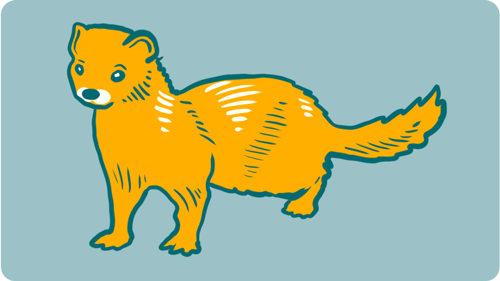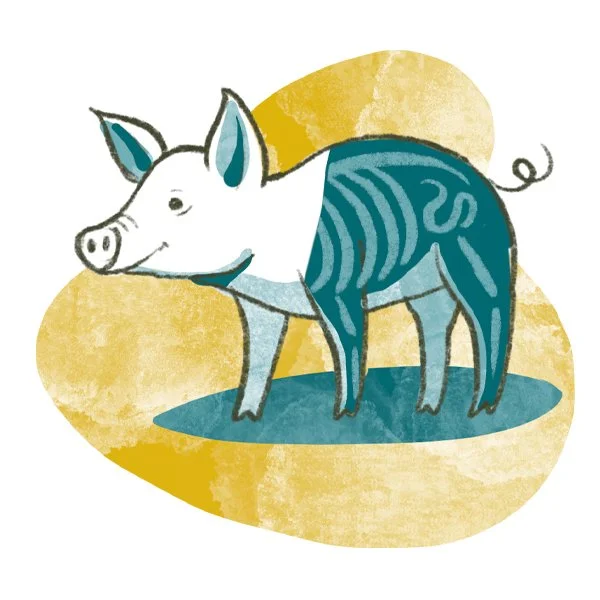
Animal Dissection
Approximately 78-94% of secondary science and biology teachers include dissection as part of their curricula, and even higher numbers of students say they have participated in one or more animal dissections (Oakley, 2013). But many biology teachers question the use of animals for dissection, the large numbers of animals involved, where those animals come from, the ecological impact of taking some animals from the wild, and how this practice affects children psychologically. Humane teaching methods have demonstrated time and again to be exceptional in regard to effectiveness, cost, environmental impact, ethics, and the socio-emotional well-being of students (Zemanova & Knight, 2021).
-
It’s difficult to measure exactly how many animals are used for dissection, since most are not covered under the Animal Welfare Act (AWA) and schools are not required to maintain records on animal use. However, it has been estimated that 10-12 million animals are used each year for dissection exercises in the U.S. alone (Osenkowski, Karaliunas, & Diorio, 2022). Most of these animals suffer and die for a one-time classroom demonstration.
Say "exactly how many animals are used for dissection, since most are not covered..." (the heading doesn't replace the need for a complete first sentence)
-
Animals used in dissection may be taken from their natural habitat, or obtained from animal breeders and dealers, ranches, and slaughterhouses – industries notorious for animal cruelty. Cats and dogs, who may have once been someone's pet, are obtained from pounds and shelters. Schools purchase animal specimens for classroom use from biological supply companies. These companies obtain cats, frogs, fetal pigs, dogfish sharks, and many other animals as cheaply as possible. They then 'process' and preserve them as specimens and sell them to schools for up to 10 to 20 times the cost. View the Dying To Learn Report to learn more about the supply and use of animals in higher education.
-
The most commonly dissected vertebrate animals are frogs, fetal pigs, and cats. Other vertebrate animals are also dissected, including dogfish sharks, perch, rats, mice, pigeons, salamanders, rabbits, turtles, snakes, foxes, bats, and mink. Invertebrate animals used for dissection include earthworms, crayfish, grasshoppers, clams, sea stars, squid, sea urchins, and cockroaches. Also, individual organs used for dissection are taken from animals such as cows, pigs, and sheep.
Snapshot of Some Animals Used
-

Frogs
Many of the frogs used for dissection are caught from the wild, disrupting the balance of ecosystems. Purpose-bred frogs are raised in conditions that facilitate disease, which can spread to fragile wild amphibian populations. To pinpoint the staggering numbers of frogs taken from the wild, Animalearn found through a government records request that close to a million frogs were taken from the wild (over a three-year period) in Mexico for use in U.S. science classes. Taking so many frogs from their natural habitat poses a significant threat to species already endangered due to habitat loss, pollution, and demand for consumption. View Animalearn’s Frog Dissection Fact Sheet to learn more.
-

Cats
Cats, who commonly share our homes, are frequently used for dissection. For many who form a connection to these companion animals, feline dissection can be traumatizing. Biological supply companies acquire cat cadavers from pounds, shelters, and/or random source dealers at a low cost, and then resell them to schools. Random source dealers may obtain animals through fraudulent “free to good home” ads or by stealing pets. It is a violation of the public trust and a conflict of interest for shelters to be in the dissection supply business. View Animalearn's Cat Dissection Fact Sheet to learn more.
-

Pigs
Fetal pigs are removed from the bodies of pregnant sows killed for meat. In 2023, almost 128 million pigs were slaughtered in the U.S. alone (Shahbandeh, 2023), up from just over 118 million five years earlier in 2016 (Sanders, 2018). Almost all of the pigs slaughtered annually in the United States are raised on factory farms where they are deprived of space, fresh air, and natural forage, and may also have had their tails cut off and teeth excised. The use of fetal pigs as dissection products financially supports industrialized factory farming. View Animalearn’s Fetal Pig Dissection Fact Sheet to learn more.
-

Dogfish Sharks
The Spiny Dogfish is listed as Vulnerable on the International Union for Conservation of Nature and Natural Resources (IUCN) Red List, which is one step below Endangered. The Spiny Dogfish is exploited by both target and bycatch (unintentional) fisheries. As a result, dogfish populations are threatened and therefore should not be sought after for dissection in the classroom.
-

Mink
Every year, over a million mink are killed at U.S. fur farms (National Agricultural Statistics Service, 2022). Prior to being killed and skinned for their fur, these animals often endure overcrowding in barren wire cages. These normally free-roaming aquatic animals often develop neurotic behavior (including cannibalism and self-mutilation) due to their confinement. Biological supply companies purchase the skinned bodies of mink and market them as an ”economical alternative” to cat dissections, thereby subsidizing this cruel industry.
-

Invertebrates
An invertebrate is any animal who lacks a vertebral column, or backbone. Over 95% of all living animal species are invertebrates, and 1.25 million such species have been discovered. Many invertebrates are commonly used for classroom dissection, including sea stars, earthworms, clams, squid, crayfish, sea urchins, and various insects such as cockroaches, fruit flies, and grasshoppers, among others.
Many people believe that invertebrates are not sentient, and therefore, do not have the capability to feel pain, which is used as a justification for dissecting these unique creatures. Sentience is the ability to feel a range of emotions and feelings, such as pleasure, pain, joy, and fear. Some animals even experience complex emotions, such as grief and empathy. (Animal Sentience, 2022) However, research has been compiled on this Invertebrate Sentience Table showing that they demonstrate many of the indicators of sentience. The evidence is clear: invertebrates may not have the same anatomy and brain structures as mammals, but they are sentient and can feel a range of emotions and experiences. (Animal Sentience, 2022)
-

Environmental Impact of Dissection
Taking animals such as wild-caught frogs, who are among the most frequently dissected animals, just to use for a one-time anatomy exploration is wasteful and damaging to the ecosystems where these creatures once lived.
The chemical preservatives formaldehyde and formalin (a diluted form of formaldehyde) used to preserve dissection specimens can contaminate water and soil, and potentially harm humans and wildlife when discarded improperly. It is the responsibility of schools to determine if the dissected animal waste is hazardous and then ensure that it is disposed of properly. Too often, schools are not equipped to dispose of biohazardous waste and specimens containing harmful chemicals are thrown into the trash, which then leach into the environment. View Animalearn's Environmental Impact of Dissection Fact Sheet to learn more.
-

Health Risks of Dissection
Chemical preservatives can have effects ranging from respiratory irritation to more serious conditions, such as cancer. Formaldehyde, a chemical commonly used to preserve animal specimens, has been linked to cancers of the throat, lungs, and nasal passages, especially with prolonged exposure. Also, the U.S. Environmental Protection Agency (EPA) considers formaldehyde to be a probable human carcinogen. Even short-term exposure to formaldehyde can irritate the eyes, skin, nose, throat, and lungs, and children may be more susceptible to the respiratory effects of formaldehyde than adults. According to the Agency for Toxic Substances and Disease Registry, children exposed to the same amounts of formaldehyde as adults may suffer more harm because they have greater lung surface area to body weight ratios and increased minute volumes to weight ratios. However, adult educators may have prolonged exposure, due to teaching multiple labs over several years. Formalin is a commonly used specimen preservative that consists of formaldehyde, water, and methanol, which can also cause dangers to human health when used in the science classroom. The Agency for Toxic Substances and Disease Registry’s Medical Management Guidelines for Formaldehyde/Formalin can be found here.
Biological supply companies claim to have developed less toxic preservative fluids, but according to the National Science Teaching Association (NSTA) press book, Inquiring Safely: A Guide for Middle School Teachers, "Most still contain formaldehyde, albeit in lesser concentrations and mixed with other ingredients. Treat all specimen preservatives as though they contain formaldehyde, particularly if you or your students are sensitive to materials of this type." (Kwan & Texley, 2003)
Dissection instruments such as scalpels, probes, and scissors used to cut into dead specimens can also cause bodily damage if used improperly by inexperienced or immature students.
Other Concerns about Dissection
Dissection perpetuates a disposable paradigm.
Destroying animals for a one-time classroom exercise reinforces the idea that they are merely disposable “tools” who have no real value as individuals or as members of a species. The practice of dissecting an animal who has been taken from the wild or otherwise especially killed for a single lab exercise only reinforces the throwaway paradigm. (Witte, 2014)
Dissection can lead to desensitization.
Science education is part of a larger student socialization process where values and social norms are taught – both intentionally and unintentionally. Dissection’s hidden curriculum teaches lessons about the ethics of animal use: specifically, that there is little value in animal life. (Oakley, 2013)
Alternatives to Dissection
Innovative methods of teaching life sciences are available, ranging from realistic models to mobile applications to AR (Augmented Reality) and VR (Virtual Reality) programs. In many cases, the models and simulations provide a more comprehensive illustration of anatomy and physiology than dissection, all while maintaining a respect for life. An updated list of technological humane alternatives can be found on our Virtual Dissection Resources page. You can also view our Alternatives page for more information.
Efficacy of Dissection Alternatives
Data shows that in 95% of studies, students do at least as well – and in most cases better – when they use NAMs (non-animal methods) compared to animal dissection. Continued use of animal dissection for purposes of providing hands-on activities or continuing traditions in biology education can no longer be pedagogically justified (Ormandy, et al., 2022). View Animalearn's Comparative Studies to learn more.
Budgetary Concerns with Dissection
Many science educators identify cost as the largest barrier to implementing dissection alternatives. However, many dissection alternatives are available for free, or for a nominal fee, and the reusable nature of alternatives makes them less expensive in the longer term than traditional animal specimens, which need to be purchased each year. (Osenkowski, Karaliunas, & Diorio, 2022) School districts can save significantly if they replace animal specimens with technology-based dissection alternatives. View Animalearn's Cost Comparison to see the potential cost savings.
REFERENCES
American Humane Association. (July 2015). Pets in the Classroom Study Phase I Findings Report. Washington D.C.: American Humane Association. Retrieved from https://www.americanhumane.org/app/uploads/2016/08/PETS-IN-THE-CLASSROOM-CKT-R4.pdf
Animal Sentience. (2022, December 22). Retrieved July 17, 2023, from World Animal Protection: https://www.worldanimalprotection.org/our-work/animal-sentience
Kwan, T., & Texley, J. (2003). Inquiring Safely: A Guide for Middle School Teachers. Arlington: National Science Teachers Association.
National Agricultural Statistics Service. (2022, July 18). Retrieved from USDA: https://downloads.usda.library.cornell.edu/usda-esmis/files/2227mp65f/d791tn532/7s75fk83r/mink0722.pdf
Oakley, J. (2013). Animal Dissection In Schools: Life Lessons, Alternatives and Humane Education. Ann Arbor: Animals and Society Institute.
Ormandy, E., Schwab, J. C., Crowe, S., Green, N., Oakley, J., Osenkowski, P., & Sumner, C. (2022). Animal Dissection vs. Non-Animal Teaching Methods: A Systemic Review of Pedagogical Value. The American Biology Teacher, Vol. 84, No. 7, 397-402.
Osenkowski, P., Karaliunas, I., & Diorio, M. (2022). Educators' Views on the Use of Dissection and Dissection Alternatives in American Biology Classrooms. Alternatives to Laboratory Animals, Vol. 50(3) 235-243.
Sanders, B. (2018, October 10). Global Pig Slaughter Statistics and Charts. Retrieved from Faunalytics: https://faunalytics.org/global-pig-slaughter-statistics-and-charts/
Shahbandeh, M. (2024, June 17). Total Number of Hogs Slaughtered in the U.S. from 2000 to 2023. Retrieved from Statista: https://www.statista.com/statistics/194382/number-of-hogs-slaughtered-in-the-us-since-2000/#:~:text=This%20statistic%20shows%20the%20total,129%20million%20hogs%20were%20slaughtered

